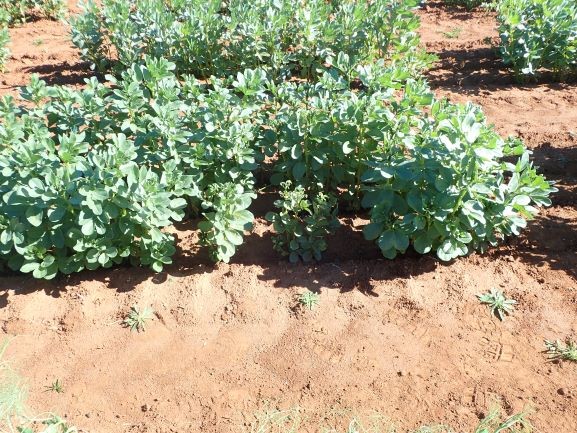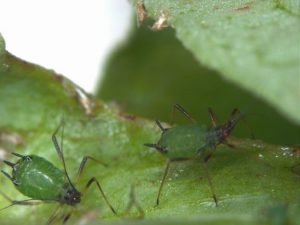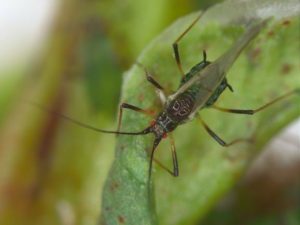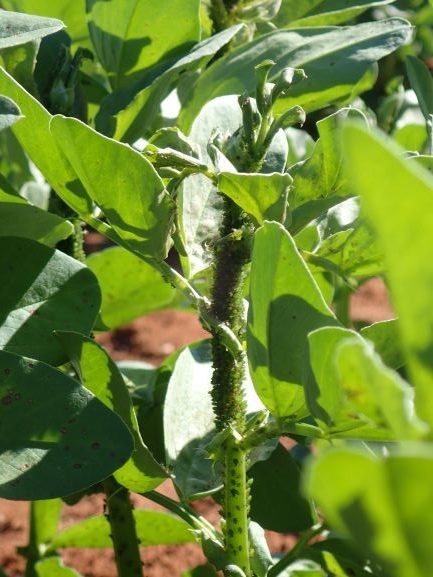Faba bean aphid (FBA, Megoura crassicauda) was first noted in Australia on broad beans (Vicia faba L. cv. Coles Early Dwarf) in October 2016 in a Sydney suburb, (Hales et al., 2017). FBA was then recorded in September 2017 at two faba bean trial sites: NSW DPI Tamworth Agricultural Institute (TAI) and Liverpool Plains Field Station Breeza (LPFS Breeza). These trials were subsequently treated with Aphidex® (500 g pirimicarb/kg) which eradicated the aphids. FBA was not found in any other faba bean crops during 2017 or during the 2018 and 2019 winter cropping seasons. During this period several communiques were extended to the industry, informing faba bean growers about the potential danger of FBA.
On 16 July 2020 FBA was noted during a routine inspection of faba bean disease screening trials at the NSW DPI Grafton Primary Industries Institute. The infestation was limited to a single plot, however, all plants in the plot showed a high level of colonisation. Distribution of plant symptoms in the plot suggested an early infestation starting with a single plant, which showed severe stunting.

Stunted plant – symptom of early infestation of FBA (photo by Joop van Leur)
Samples were collected and submitted for morphological identification at TAI and Megoura crassicauda was confirmed.
FBA is a large aphid with body length of more than 3 mm. An adult has spindle-shaped bright green body with black appendages (including head, antennae, prothorax, cauda (‘tail’), siphuncles (‘exhaust pipes’), and legs). Its antennae exceed the body length. The easiest recognisable character is the bright red eyes.

Wingless FBA

Winged FAB
FBA could present a serious threat to the Australian faba bean industry, primarily through feeding damage and its ability to form large colonies in a few days. Besides faba bean / broad bean, it can survive on other Vicia species such as vetches.

Intensive colonisation of FBA on young faba bean plant (photo by Joop van Leur)
Pirimicarb is registered for faba bean and was highly effective in 2017. The Grafton trial received an application on 17 July, after which no surviving aphids were noted.
While FBA presence has not been reported elsewhere in Australia, its presence in Grafton indicates that the aphid has survived, most likely in domestic vegetable gardens in mild, coastal environments and could spread from there to commercial inland faba bean crops.
If you spot any suspicious aphid activity in your faba bean crop, please inform the NSW DPI entomologists at Tamworth for identification.
- Zorica Duric 0409 927 226 ([email protected])
- Joop van Leur 0427 928 018 ([email protected])
Reference:
Hales DF, Gillespie PS, Wade S and Dominiak BC 2017. First detection of Megoura crassicauda Mordvilko (Hemiptera: Aphididae) in Australia and a review of its biology. General and Applied Entomology 45:77-81.
